Hemicolectomy Cost in South Africa from top hospitals starts from USD 37500 approx.
When a part of the large intestine or colon gets affected by cancer, the process of removing that part by surgery is called Hemicolectomy.
It is mainly required to treat the cancer of vowels or the type of Crohn's disease. The surgical process includes the removal of the infected area of the bowel and replacing it with a new part which may be grafted from the skin or an artificial implant.
It is mostly an advanced measure that is taken when the part of the colon cannot be cured by the means of any medicinal measure. It also depends on how much the damage is and the extent of infection in the colon.
When a person is suffering from some acute condition of the stomach then he or she is an eligible candidate for Hemicolectomy.
Mostly in the case of bowel cancer, doctors prefer to use the surgical technique of hemicolectomy. The conditions of ulcerative colitis also make the patient an ideal candidate for the procedure of hemicolectomy. The other conditions include Crohn's disease, polyps or growths, and diverticulitis.
The polyp growth in the stomach is the one that requires close attention as they don’t normally get cured by the traditional medicinal procedure. There are several methods that can achieve hemicolectomy and these are based on the complications of the patient.
Following are the factors which influence the cost of hemicolectomy:
| Country | Minimum Cost | Minimum Local Currency | Maximum Cost | Maximum Local Currency |
|---|---|---|---|---|
| India | USD 5500 | INR 457325 | USD 7500 | INR 623625 |
| Thailand | USD 12000 | THB 427800 | USD 25000 | THB 891250 |
| Turkey | USD 11000 | TRY 331540 | USD 18000 | TRY 542520 |
| United Arab Emirates | - | - | USD 30000 | AED 110100 |
Treatment cost
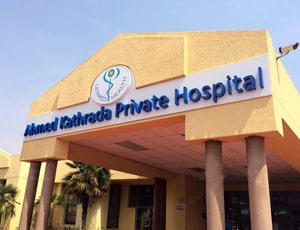
Apart from in-detail treatment procedures available, Lenmed Ahmed Kathrada Private Hospital located in Johannesburg, South Africa has a wide variety of facilities available for International Patients. Some of the facilities which are provided by them are Accommodation, Airport Transfer, Choice of Meals, Interpreter, SIM, TV inside room. Also listed below are some of the most prominent infrastructural details:

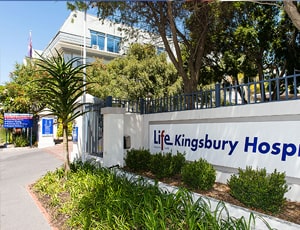
Apart from in-detail treatment procedures available, Life Kingsbury Hospital located in Cape Town, South Africa has a wide variety of facilities available for International Patients. Some of the facilities which are provided by them are Accommodation, Airport Transfer, Choice of Meals, Interpreter, SIM, TV inside room. Also listed below are some of the most prominent infrastructural details:
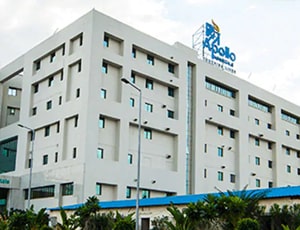
Types of Hemicolectomy in Apollo Hospital and its associated cost
| Treatment Option | Approximate Cost Range (USD) | Approximate Cost Range (INR) |
|---|---|---|
| Hemicolectomy (Overall) | 9137 - 13540 | 744724 - 1097928 |
| Right Hemicolectomy | 6657 - 10227 | 562663 - 824230 |
| Left Hemicolectomy | 9041 - 13319 | 731302 - 1082612 |
| Transverse Hemicolectomy | 9715 - 13453 | 798950 - 1106959 |
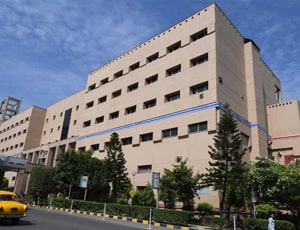
Types of Hemicolectomy in Apollo Multispecialty Hospitals and its associated cost
| Treatment Option | Approximate Cost Range (USD) | Approximate Cost Range (INR) |
|---|---|---|
| Hemicolectomy (Overall) | 9131 - 13373 | 736143 - 1087201 |
| Right Hemicolectomy | 6729 - 10048 | 548730 - 822880 |
| Left Hemicolectomy | 8924 - 13368 | 738590 - 1116302 |
| Transverse Hemicolectomy | 9441 - 13228 | 772102 - 1093856 |

Types of Hemicolectomy in Memorial Atasehir Hospital and its associated cost
| Treatment Option | Approximate Cost Range (USD) | Approximate Cost Range (TRY) |
|---|---|---|
| Hemicolectomy (Overall) | 4416 - 13277 | 138500 - 405163 |
| Right Hemicolectomy | 4559 - 11139 | 132946 - 344697 |
| Left Hemicolectomy | 5687 - 12496 | 167325 - 364968 |
| Transverse Hemicolectomy | 5536 - 13261 | 172827 - 415413 |
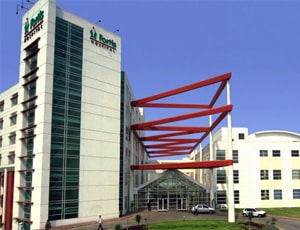
Types of Hemicolectomy in Fortis Hospital and its associated cost
| Treatment Option | Approximate Cost Range (USD) | Approximate Cost Range (INR) |
|---|---|---|
| Hemicolectomy (Overall) | 8159 - 12197 | 667436 - 1000037 |
| Right Hemicolectomy | 6094 - 9125 | 497898 - 750480 |
| Left Hemicolectomy | 8122 - 12237 | 666227 - 995581 |
| Transverse Hemicolectomy | 8596 - 12134 | 704581 - 1003551 |
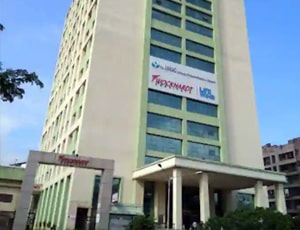
Types of Hemicolectomy in Wockhardt Hospital, Umrao and its associated cost
| Treatment Option | Approximate Cost Range (USD) | Approximate Cost Range (INR) |
|---|---|---|
| Hemicolectomy (Overall) | 8132 - 12220 | 668782 - 994691 |
| Right Hemicolectomy | 6117 - 9138 | 498569 - 748303 |
| Left Hemicolectomy | 8103 - 12160 | 667110 - 995191 |
| Transverse Hemicolectomy | 8628 - 12137 | 710584 - 998243 |
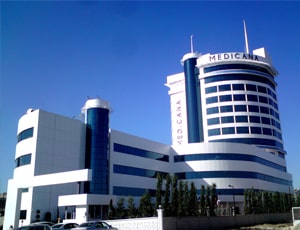
Types of Hemicolectomy in Medicana Konya Hospital and its associated cost
| Treatment Option | Approximate Cost Range (USD) | Approximate Cost Range (TRY) |
|---|---|---|
| Hemicolectomy (Overall) | 4559 - 13446 | 136433 - 412711 |
| Right Hemicolectomy | 4425 - 11025 | 135872 - 332693 |
| Left Hemicolectomy | 5711 - 12427 | 167831 - 380858 |
| Transverse Hemicolectomy | 5517 - 13208 | 172694 - 407250 |
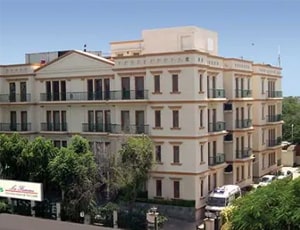
Types of Hemicolectomy in Fortis La Femme, Greater Kailash II and its associated cost
| Treatment Option | Approximate Cost Range (USD) | Approximate Cost Range (INR) |
|---|---|---|
| Hemicolectomy (Overall) | 8109 - 12141 | 665620 - 1003067 |
| Right Hemicolectomy | 6102 - 9131 | 499873 - 747268 |
| Left Hemicolectomy | 8128 - 12130 | 667302 - 993867 |
| Transverse Hemicolectomy | 8661 - 12191 | 708373 - 995662 |
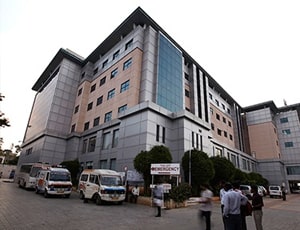
Types of Hemicolectomy in BGS Gleneagles Global Hospitals and its associated cost
| Treatment Option | Approximate Cost Range (USD) | Approximate Cost Range (INR) |
|---|---|---|
| Hemicolectomy (Overall) | 8987 - 13309 | 727214 - 1092218 |
| Right Hemicolectomy | 6766 - 10090 | 558997 - 845255 |
| Left Hemicolectomy | 8958 - 13698 | 750732 - 1094477 |
| Transverse Hemicolectomy | 9625 - 13310 | 786044 - 1098870 |
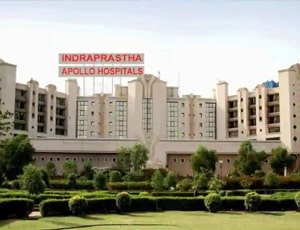
Types of Hemicolectomy in Indraprastha Apollo Hospital and its associated cost
| Treatment Option | Approximate Cost Range (USD) | Approximate Cost Range (INR) |
|---|---|---|
| Hemicolectomy (Overall) | 8866 - 13498 | 724637 - 1085740 |
| Right Hemicolectomy | 6762 - 10340 | 542885 - 838271 |
| Left Hemicolectomy | 8937 - 13460 | 741994 - 1091562 |
| Transverse Hemicolectomy | 9488 - 13614 | 790686 - 1121300 |
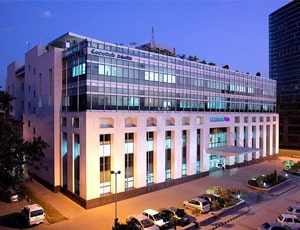
Types of Hemicolectomy in Manipal Hospital, Yeshwantpur and its associated cost
| Treatment Option | Approximate Cost Range (USD) | Approximate Cost Range (INR) |
|---|---|---|
| Hemicolectomy (Overall) | 9014 - 13672 | 732906 - 1103311 |
| Right Hemicolectomy | 6698 - 10317 | 548008 - 843397 |
| Left Hemicolectomy | 8876 - 13368 | 729613 - 1115484 |
| Transverse Hemicolectomy | 9557 - 13661 | 779614 - 1118529 |

Types of Hemicolectomy in Shanti Mukand Hospital and its associated cost
| Treatment Option | Approximate Cost Range (USD) | Approximate Cost Range (INR) |
|---|---|---|
| Hemicolectomy (Overall) | 8110 - 12173 | 666185 - 997286 |
| Right Hemicolectomy | 6110 - 9139 | 497511 - 746949 |
| Left Hemicolectomy | 8089 - 12237 | 666382 - 1002188 |
| Transverse Hemicolectomy | 8604 - 12208 | 703987 - 995703 |
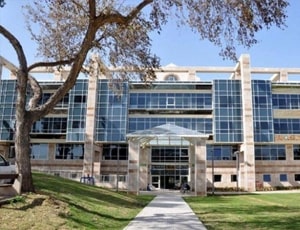
Kaplan Medical Centre located in Rehovot, Israel is accredited by JCI. Also listed below are some of the most prominent infrastructural details:
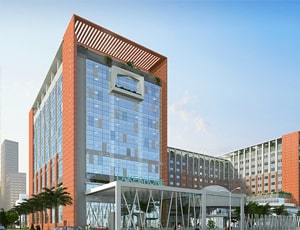
Types of Hemicolectomy in VPS Lakeshore Hospital and its associated cost
| Treatment Option | Approximate Cost Range (USD) | Approximate Cost Range (INR) |
|---|---|---|
| Hemicolectomy (Overall) | 8150 - 12162 | 662574 - 996453 |
| Right Hemicolectomy | 6112 - 9171 | 497049 - 746189 |
| Left Hemicolectomy | 8082 - 12137 | 668818 - 1002916 |
| Transverse Hemicolectomy | 8628 - 12169 | 708989 - 999596 |
A hemicolectomy is a surgical procedure classified as a type of colectomy, involving the removal of a portion of the colon (large intestine). In a right hemicolectomy, the right side of the colon is excised, encompassing the caecum, appendix, ascending colon, and a portion of the transverse colon. Conversely, in a left hemicolectomy, the left side of the colon is removed, including a portion of the transverse and descending colon.
Some of the conditions that require complete colectomy or hemicolectomy surgery include the following:
Following are the different types of Hemicolectomy:
The procedure can be performed through either a single incision in the abdomen or with laparoscopy, also known as 'keyhole' surgery, which involves several smaller incisions. After administering general anesthesia, the surgeon removes the diseased portion of the bowel. Next, the surgeon connects the remaining ends of the colon, typically using stitches or staples. In some cases where the ends cannot be joined, one end may be brought out to the skin surface of the abdomen, creating a stoma. A colostomy bag is then attached around the stoma to collect bowel contents. Regular emptying of the bag is necessary. For many patients, the stoma is temporary and may be reversed in a subsequent operation once the bowel has healed sufficiently. Patients requiring a stoma will receive specialized care from a stoma nurse, who can provide guidance and support throughout the process.
Following laparoscopic surgery, a hospital stay of two to three days may be necessary, while open surgery may require three to seven days. During the initial 24 hours post-surgery, intravenous fluids will be administered, and oral intake will be restricted. Clear liquids may be introduced after 24 hours. A bladder catheter will be inserted temporarily and removed after a few days. Sutures and staples on the abdomen will typically be removed around 14 days post-surgery. Heavy lifting and strenuous activities should be avoided for up to six weeks. Spicy foods should be avoided, and small, frequent meals are recommended. Walking is encouraged within 24 to 48 hours post-procedure to prevent respiratory complications. The discharge will be based on recovery progress and evidence of bowel function. Follow-up visits with the surgeon are essential for monitoring bowel health and overall recovery.
Ask your healthcare adviser for the best multiple options and choose the one that meets your expectations
USD 37500 is the starting cost of Hemicolectomy Surgery in South Africa. There many COHSASA certified hospitals in South Africa that offer Hemicolectomy
The Hemicolectomy package cost in South Africa varies from one hospital to another and may offer different benefits. The top hospitals for Hemicolectomy in South Africa covers all the expenses related to the pre-surgery investigations of the candidate. The Hemicolectomy cost in South Africa includes the cost of anesthesia, medicines, hospitalization and the surgeon's fee. There are many things that may increase the cost of Hemicolectomy in South Africa, including prolonged hospital stay and complications after the procedure.
Hemicolectomy in South Africa is offered by multiple hospitals across the country. For quick reference, the following are some of the leading hospitals for Hemicolectomy in South Africa:
Upon discharge from the hospital after Hemicolectomy in South Africa, the patients are advised to stay for about 21 days for recovery. During this time, the patient undergoes medical tests and consultations. this is to ensure that the treatment was successful and the patient us safe to return.
Apart from the cost of Hemicolectomy, the patient is also required to pay additionally for daily meals and guest house accommodation. The extra charges may start from USD 50 per person.
The following are some of the best cities for Hemicolectomy in South Africa:
The patient has to spend about 5 days in the hospital after Hemicolectomy for proper recovery and to get clearance for discharge. The doctors team review the patient's recovery during this time with the help of blood tests and imaging scans. Once they feel that everything is on track, the patient is discharged.
The average rating for Hemicolectomy hospitals in South Africa is 2.9. This rating is automatically calculated on the basis of several parameters such as the infrastructure of the hospital, quality of services, nursing support and other services.
There are more than 2 hospitals that offer Hemicolectomy in South Africa. The above mentioned clinics have the required infrastructure and a dedicated unit where patients can be treated. Such hospitals follow all legal protocols and guidelines as specified by the local medical affairs body when it comes to the treatment of international patients.
Some of the renowned medical specialists for Hemicolectomy in South Africa are: